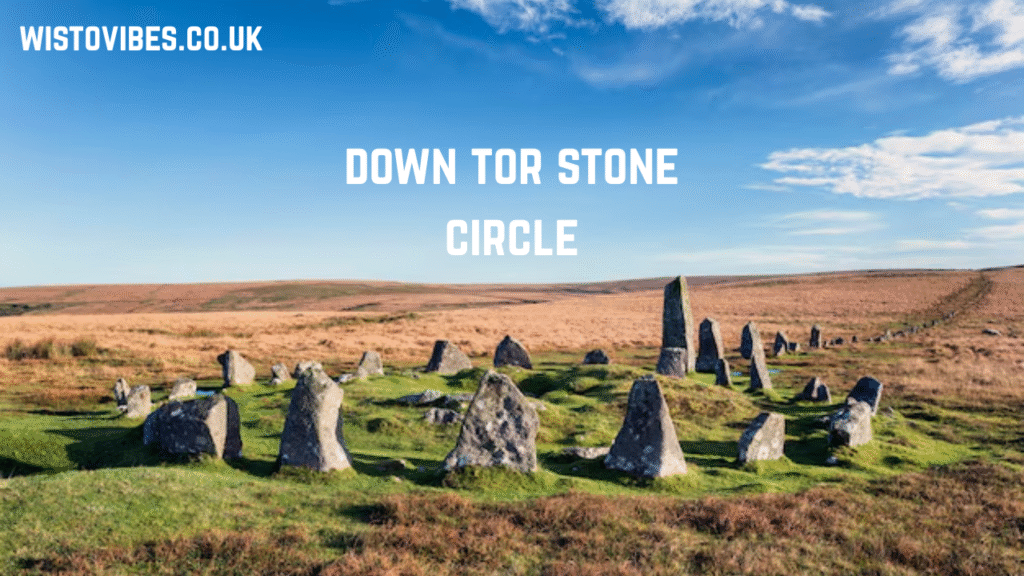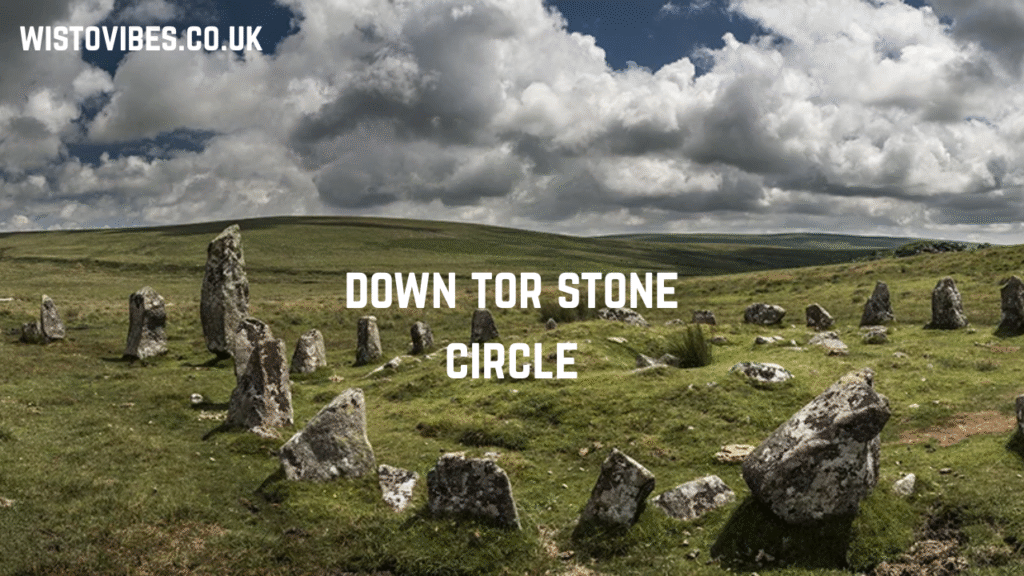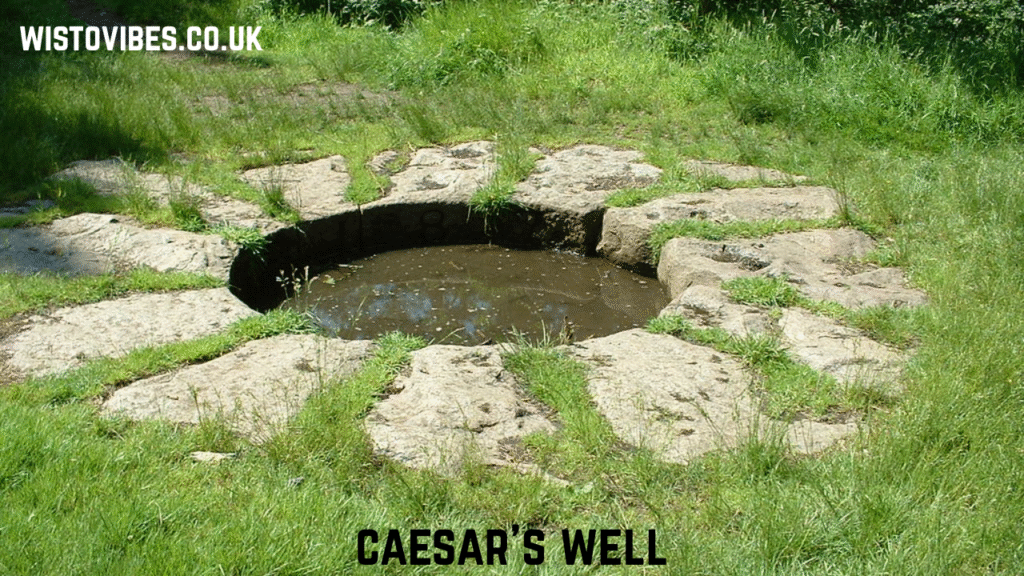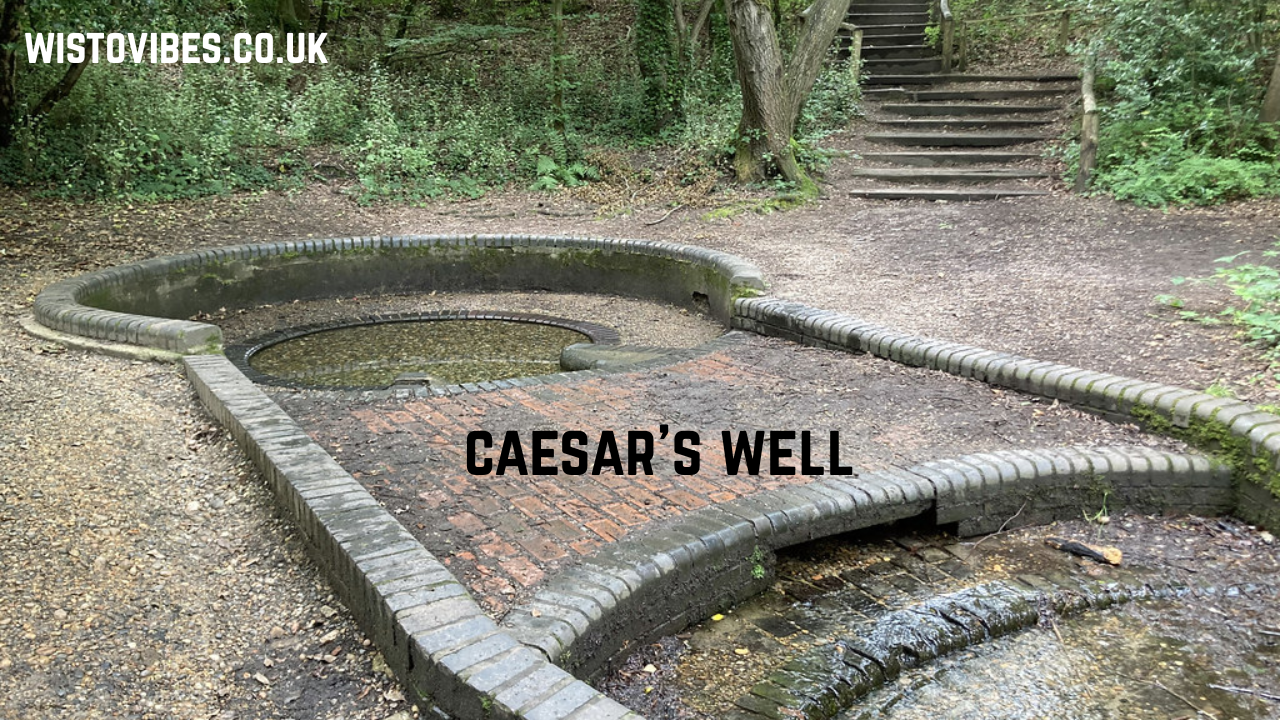Down Tor Stone Circle is one of the most remarkable and atmospheric prehistoric monuments found on the wild and rugged Dartmoor landscape in Devon, England. The circle, positioned near the slopes of Down Tor, is part of a larger complex of stones, rows, and burial cairns that together form an enigmatic picture of ancient ceremonial life. Its placement on a windswept moor, with open views across valleys and tors, gives it a striking and mysterious presence that continues to attract archaeologists, historians, and visitors who are drawn to its enduring aura of the past.
Location and Setting of Down Tor Stone Circle

Down Tor Stone Circle is located on the southern edge of Dartmoor, an area famed for its granite tors, sweeping moorlands, and prehistoric archaeology. The circle itself sits near the Burrator Reservoir, with Down Tor rising prominently above it. This dramatic placement is not accidental, as ancient builders often aligned stone circles with significant natural features. The surrounding environment adds to the mystique of the site, with ever-changing weather, mist, and light creating a timeless and almost spiritual atmosphere for those who walk the moors in search of the monument.
Structure and Layout of Down Tor Stone Circle
The Down Tor Stone Circle is composed of upright granite stones arranged in a near-perfect circular formation, though the passage of thousands of years has caused some to lean or topple. The circle is relatively modest in size compared to famous examples like Stonehenge or Avebury, but what it lacks in scale, it makes up for in elegance and precision. The stones vary in height, and their positioning suggests intentional design rather than random placement. This careful construction indicates that the circle had a significant role in the lives of the communities who built it, whether ceremonial, social, or astronomical.
Archaeological Significance of Down Tor Stone Circle

Archaeologists believe that Down Tor Stone Circle was part of a larger ceremonial and ritual landscape. The site includes not only the circle itself but also an impressive stone row that extends for nearly 400 meters, linking the circle to a cairn or burial mound at its northern end. This association between stone circles, rows, and burial cairns is a common feature in Dartmoor’s prehistoric landscape, suggesting that these sites were deeply connected to beliefs about life, death, and the cosmos. Excavations and surveys of the area indicate that the site likely dates back to the Bronze Age, around 2000–1500 BCE.
The Stone Row at Down Tor
One of the most intriguing aspects of Down Tor Stone Circle is the long double stone row that stretches away from the circle. Unlike single rows found in many other locations, this double row creates a kind of processional avenue leading up to the cairn. The alignment of the row and the circle may have held symbolic significance, perhaps representing a journey from the world of the living to that of the ancestors. Some researchers also suggest that the alignment may have astronomical meaning, relating to the rising or setting sun at particular times of the year.
The Burial Cairn and Ancestors

At the end of the stone row associated with Down Tor Stone Circle lies a cairn, which is thought to have been a burial site. Such cairns often contained cremated remains, pottery, or offerings to the dead. The combination of circle, row, and cairn may represent a ritual path that connected the living with their ancestors or deities. This idea reflects broader Bronze Age beliefs across Britain, where stone monuments often symbolized connections between the earthly world and the spiritual realm. The cairn near Down Tor adds an extra dimension to the site, reminding us that these were places of reverence and remembrance.
Rituals and Ceremonies at Down Tor Stone Circle
Though we cannot know for certain what rituals took place at Down Tor Stone Circle, many archaeologists believe that it was used for ceremonies related to seasonal cycles, fertility, and ancestor worship. The circle itself may have served as a gathering place where communities came together to mark important events, exchange goods, or reaffirm social ties. The presence of the long stone row suggests that processions or ritual journeys were also a key part of the ceremonies. Even today, modern visitors often sense a special atmosphere at the site, suggesting that the monument still carries echoes of its ritual past.
Astronomical Connections of Down Tor Stone Circle
Many stone circles across Britain are believed to have astronomical significance, and Down Tor Stone Circle is no exception. Scholars have speculated that the circle and row may align with certain solar or lunar events, such as solstices or equinoxes. The careful placement of stones in relation to natural landmarks may have created a kind of prehistoric observatory, allowing ancient people to track the passage of time and the movement of celestial bodies. While not as clearly aligned as other monuments, the possibility of astronomical connections adds to the mystery of the site.
Myths and Legends of Down Tor Stone Circle
As with many ancient monuments, local folklore surrounds Down Tor Stone Circle. Stories tell of stones that move at night, people turned to stone for breaking sacred rules, or ghostly processions that appear under the moonlight. Such legends often reflect the awe and reverence that communities felt toward these monuments, long after their original purpose was forgotten. The circle’s remote and windswept location adds to its aura of mystery, fueling imaginative tales passed down through generations. Even today, the site continues to inspire myths and creative storytelling.
Down Tor in the Context of Dartmoor Prehistory
Down Tor Stone Circle is part of a vast network of prehistoric remains scattered across Dartmoor. The moors are home to more than seventy known stone circles, hundreds of rows, and numerous burial cairns, making it one of the richest prehistoric landscapes in Europe. In this context, Down Tor stands out for its combination of circle, double row, and cairn, forming a complete ritual complex. This highlights the importance of Dartmoor as a ceremonial landscape, where communities invested enormous effort in constructing enduring monuments that still shape the moorland today.
The Builders of Down Tor Stone Circle
The people who built Down Tor Stone Circle lived during the Bronze Age, a period marked by significant social and technological changes. They were skilled in stoneworking, farming, and community organization. The construction of such monuments required not only physical labor but also shared belief systems and traditions that bound people together. By raising stones in circles and rows, these communities created lasting symbols of their worldview, connecting themselves to the land, the skies, and their ancestors. The endurance of Down Tor Stone Circle is a testament to their ingenuity and spiritual vision.
Environmental Challenges on Dartmoor
Dartmoor’s harsh environment has always been both a challenge and a source of inspiration for its inhabitants. The moorland’s poor soils, cold winds, and heavy rains made farming difficult, yet its granite outcrops provided the material for building stone circles and rows. The builders of Down Tor Stone Circle were intimately connected to this landscape, understanding how to use its natural features to enhance their monuments. Today, the same environment that shaped the circle continues to shape the experience of visitors, who must often brave unpredictable weather to reach the site.
The Enduring Mystery of Purpose
Despite decades of study, the true purpose of Down Tor Stone Circle remains a mystery. Was it a calendar, a temple, a burial ground, or a gathering place? Perhaps it was all of these things, serving multiple roles in the life of the community. The ambiguity of its meaning is part of what makes the circle so compelling. Each visitor may interpret it differently, projecting their own ideas and experiences onto the stones. This sense of mystery ensures that Down Tor will continue to fascinate people for generations to come.
Down Tor in Modern Times
Today, Down Tor Stone Circle is protected as part of Dartmoor National Park, and it remains a popular destination for walkers, archaeologists, and spiritual seekers. Its remote location means that it is less crowded than other famous prehistoric monuments, allowing visitors to experience a sense of solitude and connection with the past. Modern druids and pagans sometimes hold ceremonies at the circle, continuing its tradition as a place of ritual and reverence. The preservation of the site ensures that it remains a living link between past and present.
Visiting Down Tor Stone Circle
Reaching Down Tor Stone Circle requires a walk across open moorland, with paths leading from Burrator Reservoir and other nearby landmarks. The journey itself is part of the experience, as visitors pass through wild landscapes that have changed little since prehistoric times. On arrival, the circle emerges from the moor like a forgotten relic, inviting quiet reflection. Visitors are encouraged to treat the site with respect, remembering that it is both an archaeological treasure and a place of spiritual significance for many.
Artistic and Cultural Influence
Down Tor Stone Circle has inspired artists, writers, and photographers who are drawn to its beauty and mystery. Its placement within the Dartmoor landscape makes it a striking subject for paintings and poems. Folklorists and storytellers have also woven the circle into tales that blend history with imagination. In this way, Down Tor continues to influence culture, just as it once influenced the communities who built it. The circle is not only a monument of stone but also a monument of creativity and inspiration.
Preservation and Challenges
Like many ancient sites, Down Tor Stone Circle faces challenges from erosion, weathering, and human activity. Conservation efforts focus on monitoring the condition of the stones and educating visitors about responsible behavior. Dartmoor’s rugged climate can accelerate the wear of exposed granite, while increased tourism brings the risk of accidental damage. Protecting the site requires ongoing vigilance and a commitment to preserving the cultural heritage of Dartmoor for future generations.
Educational Value of Down Tor Stone Circle
Down Tor Stone Circle is not only a site of mystery but also a valuable educational resource. Schools, universities, and heritage groups use it to teach about Bronze Age society, archaeology, and landscape history. By studying the circle, students gain insight into how ancient communities lived, what they believed, and how they interacted with their environment. The site brings history to life, showing that even in remote and challenging landscapes, people created enduring monuments of meaning and beauty.
Conclusion and FAQs
Down Tor Stone Circle remains one of Dartmoor’s most fascinating prehistoric monuments. Its combination of circle, double row, and cairn reflects a sophisticated and symbolic approach to ritual and community life in the Bronze Age. Though much about its purpose remains unknown, the circle continues to inspire awe, creativity, and curiosity. Whether seen as a temple, an observatory, or a memorial to ancestors, Down Tor is a powerful reminder of humanity’s enduring quest to connect with the cosmos, the land, and the spirit world.
FAQs
Q1: What is the Down Tor Stone Circle?
It is a Bronze Age stone circle on Dartmoor, connected to a double stone row and burial cairn, forming a ritual complex.
Q2: How old is the Down Tor Stone Circle?
Archaeologists date it to around 2000–1500 BCE, making it more than 3,500 years old.
Q3: What was the purpose of the circle?
Its exact purpose is unknown, but it likely served ritual, ceremonial, and possibly astronomical functions.
Q4: Can visitors access the site?
Yes, the circle is open to the public, though it requires a walk across the moor. Visitors are asked to respect and preserve the site.
Q5: Is Down Tor Stone Circle connected to other Dartmoor monuments?
Yes, it is part of a larger prehistoric landscape that includes numerous circles, rows, and cairns across Dartmoor.
Read More: Caesar’s Well History Legends Architecture and Cultural Significance




